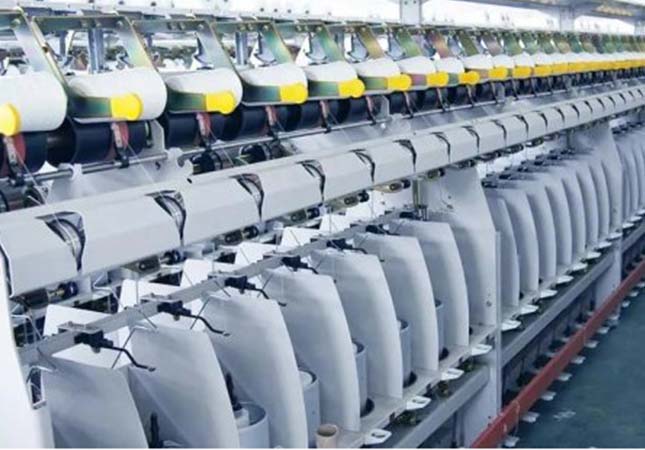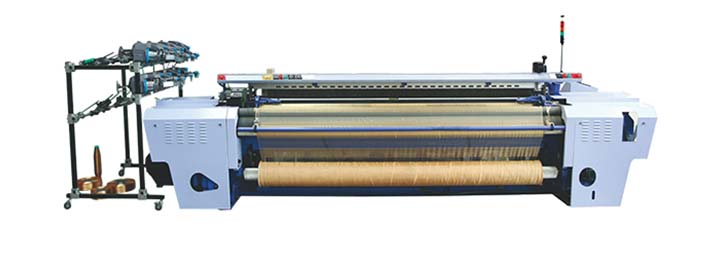The rapier loom machine, a remarkable innovation in textile machinery, utilizes a slender metal rod known as a rapier to seamlessly carry the weft thread through the warp threads. This groundbreaking advancement has played a pivotal role in transforming the textile industry, empowering it with enhanced efficiency and unparalleled versatility in production processes.
General Development of the Rapier Loom Machine
In the 1950s, the debut of the first rapier loom machine sparked a wave of enthusiasm among textile manufacturers, thanks to its remarkable attributes of speed, adaptability, and user-friendliness. However, initial versions of the rapier loom machine were hindered by constraints concerning fabric width, limiting their application to narrower fabric production.
During the 1970s, significant technological progress propelled the evolution of rapier loom machines, enabling the production of wider fabrics up to an impressive width of 3.2 meters. This pivotal breakthrough rendered the rapier loom machine a viable and versatile choice for an extensive array of textile products, encompassing curtains, upholstery, and bedding, among others.
The 1980s and 1990s witnessed a remarkable advancement in the capabilities of the rapier loom machine, fueled by the advent of computerized control systems and electronic sensors. With the integration of computerized systems, the weaving process achieved unprecedented levels of precision, yielding superior quality fabrics while minimizing waste and defects. Additionally, the introduction of electronic sensors significantly heightened the efficiency and dependability of these machines by swiftly identifying and rectifying errors in real-time. This convergence of cutting-edge technologies revolutionized the textile industry, elevating the performance and output of rapier loom machines to unprecedented heights.

In the present day, contemporary rapier loom machines have reached a pinnacle of advancement, encompassing an array of cutting-edge features. These include automated weft insertion, electronic tension control, and intricate software programs tailored for pattern design and customization. Harnessing these capabilities, these machines exhibit exceptional proficiency in producing an extensive variety of fabrics, ranging from plain weaves and twills to satins and jacquards, all executed with remarkable precision and efficiency.
SUNTECH Rapier Loom Machine
SUNTECH fully electronic glass fiber rapier loom machine(ST-ERL-GF) is designed with the coarse weft tension control for controlling automatically. The 150-500RPM max speed and 360cm max width of SUNTECH fully electronic glass fiber rapier loom also can achieve high-speed production for you.

Main Feature of ST-ERL-GF
l Available for Mesh, Electronic Fabric, Wall & Filter Cloth
l Produce Different Fiberglass Fabric with 50-300 g/m2
l High Output with Stable Running, Speed up to 500 RPM
l Multi-Function, High Quality and Warranty Assurance
Different Types of Rapier Loom Machine
Rapier loom machines, belonging to the category of shuttleless weaving machines, utilize rapier tapes or grippers to seamlessly insert the weft yarn across the fabric's width. These machines come in various types, each distinguished by its exclusive attributes and capabilities. Let's explore some of the key types:
1. Single Rapier Loom
This type of rapier loom employs a solitary rapier tape or gripper to insert the weft yarn across the fabric's width. Ideal for medium to heavy weight fabrics, single rapier looms offer reliable performance.
2. Double Rapier Loom
Double rapier looms incorporate two rapier tapes or grippers working in synchronization to insert the weft yarn. This configuration enables faster weaving speeds and enhanced flexibility during the weaving process.
3. Positive Rapier Loom
Positive rapier looms utilize a rapier tape with teeth on its surface that engage with grooves on the underside of the weft yarn. This mechanism ensures a secure grip, minimizing the risk of yarn slippage while weaving.
4. Negative Rapier Loom
Negative rapier looms feature a rapier tape with a hook on its surface, which captures and pulls the weft yarn across the fabric's width. Suitable for a wide range of fabrics, including delicate and lightweight materials.
5. Gripper Rapier Loom
Gripper rapier looms utilize gripper heads to insert the weft yarn seamlessly. Known for their exceptional versatility, these looms can handle various fabric types, including heavy and technical fabrics.
6. Projectile Rapier Loom
Projectile rapier looms utilize a projectile to insert the weft yarn across the fabric's width. These looms offer remarkable flexibility and can accommodate a diverse range of fabrics, including heavy and technical materials.
Each type of rapier loom machine possesses distinct features and advantages. When selecting the suitable rapier loom for their operations, textile manufacturers should carefully consider their specific needs and production requirements.
Conclusion
The development of modern rapier loom machines has been a game-changer for the textile industry, enabling manufacturers to produce high-quality fabrics at a faster rate and with reduced waste and errors. As technology continues to advance, it is likely that rapier loom machines will become even more sophisticated, further enhancing the efficiency and versatility of the textile production process.
SUNTECH Textile Machinery is one of the most famous textile machine manufacturer in China, especially in rapier loom machine manufacture, SUNTECH Textile Machinery glass fiber rapier loom machine is designed to improve the weaving process for textile industry, providing a range of features and benefits to enhance productivity and efficiency, contact us now!




